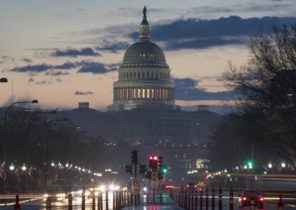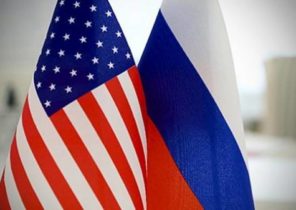Washington — In early July, Iran announced that it has with China, the negotiations on the agreement for a period of 25 years, covering the areas of trade, energy, infrastructure, telecommunications and even military cooperation.
For Iran, the prospect of a strategic partnership with China occurred at a critical time. The Iranian government is now faced with popular discontent: sinking the country’s economy has suffered from U.S. sanctions, and now more and covid-19.
The situation is compounded by the fact that the recent series of bombings across the country has strengthened the feeling that the regime is under siege. Suffered at least two objects related to Iran’s nuclear and missile programs, therefore, these incidents seem part of a wider strategy of the US and Israel to curb Iranian capabilities.
That is why the news of the big agreement with China is for the Iranian government positive distraction, she even allows him to “buy time” to preserve the status quo until the presidential elections in the United States, which will be held in November 2020. The result of these elections will determine the future trajectory of us-Iranian relations and the fate of the Iranian nuclear deal in 2015, known as the “Joint comprehensive plan of action” (abbreviated as SVPD), and at the same time will affect the presidential election in Iran in June 2021.
Historically, the Iranians avoided too close alliances with any great powers, and even less they are willing to accept someone’s economic patronage. Iran’s relations with China has become an occasion for domestic disputes, and it is possible that the Parliament will refuse to ratify the agreement unless it is revised to address certain concerns.
However, Iran’s economy is in free fall 2018, when the administration of the tramp came out of the SVPD and the beginning of the campaign “maximum pressure” through stringent sanctions designed to stifle the regime. And because the regime as a whole has faced serious popular discontent, the government of Iranian President Hassan Rouhani is under enormous internal pressure. The announcement of the deal with China allows the government to Rouhani to demonstrate to all that it does not put all his eggs in one basket West. For Iranian people it is a signal that he is not in isolation and that it can even improve the economic situation, despite the American sanctions.
In the international arena, Iran has always sought to balance one great power with another. In response to diplomatic and economic pressure by the USA during the last decades, the Iranian security forces began to lean towards Russia, key sectors of the economy — to China, and the Rouhani government — to Europe. Now, in the conditions of growing tension in Sino-American relations Iran expects that China will help him to support the economy and will be a counterweight to the United States. Closer ties with China will give Iran a lever in future negotiations with the United States and Europe when it comes to the reconsideration or the restoration AGREEMENT in its present form, and in relations with regional rivals, such as Saudi Arabia and the United Arab Emirates.
By contrast, China’s strategic partnership with Iran is a minefield. Although China continued to trade with Iran and invest in the infrastructure of this country, the deepening of relations may cause the anger of America at a critical and extremely delicate diplomatic moment. Potentially risking US sanctions, China may lose some access to the U.S. market (which is much more than Iranian). Not surprisingly, Chinese officials have said less about these negotiations than their Iranian counterparts. In addition, China does not want to destroy its regional partnerships with Israel and Saudi Arabia, and each of these countries are now engaged in a proxy war with Iran, or the covert operations against him.
Anyway, China clearly sees some value in developing a comprehensive agreement with Iran — a large, important regional player, whose huge energy resources and enormous economic potential make it a natural candidate for participation in the Chinese initiative of “One belt, one road”, which is oriented in a westerly direction. China already buys oil from Iran at a discount (and this isn’t a minor benefit of a major buyer of energy in the world), and he became a key trade partner of Iran, including its major supplier of heavy machinery and industrial goods.
Speaking broadly, over the past decade, China has been gradually expanding its presence in West Asia. It acts as the main sponsor of the regional Shanghai cooperation organization and has invested more than $ 57 billion to Pakistan. And since the US is going to withdraw from Afghanistan, partnership with Iran will provide China almost complete control over a strategic corridor stretching from Central Asia to the Arab sea.
Under this expansion, China can even gain control over the Iranian port of Chahbahar. The development of this port in response to Chinese project in the neighboring Pakistani port of Gwadar was engaged in India, the main Asian rival China. Port Chahbahar allows India to trade with Central Asian countries, bypassing Pakistan — another hostile country. However, despite the recognized importance of the port, U.S. sanctions forced India to withdraw from Chahbahar that disappointed Iran. Moreover, as reported, Iran is already squeezes India from a railway project bypassing Pakistan, which must ensure the link with Afghanistan and Central Asia. The news of this breakup appeared immediately after China and Iran announced the provisional agreement.
The recent border skirmishes between China and India show how seriously China takes its presence in West Asia. The new agreement will not only open an opportunity for China to gain control over Chhahara and monopolize the trade routes in Central Asia, but, apparently, will allow him to build offshore facilities in the Gulf of Oman. Although the United States has long wanted to reduce its presence in the middle East to focus more on China, the new Chinese-Iranian agreement reminds us that these two theaters of action not separated.
Increasing the pressure on China and Iran, the U.S. encouraged the two countries to form a common front. Although Sino-Iranian relations is very far from being able to form a new axis, the latest negotiations show that it is possible.
The leaders of the US foreign policy needs to pay attention to it. America will have to try to drive a wedge between China and Iran, and this will need to decide which of the two countries provides a stronger threat. Americans can be and want nothing but to leave the Middle East once and for all. However, the fact that the strategic competition with China is not going to unfold exclusively in East Asia.







